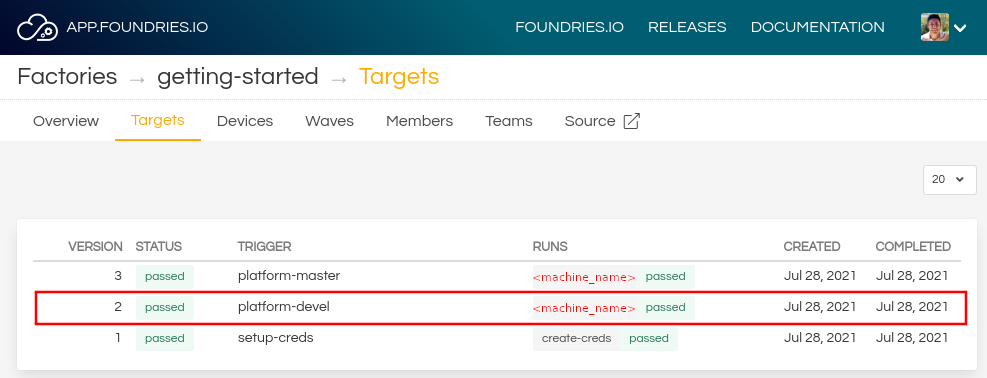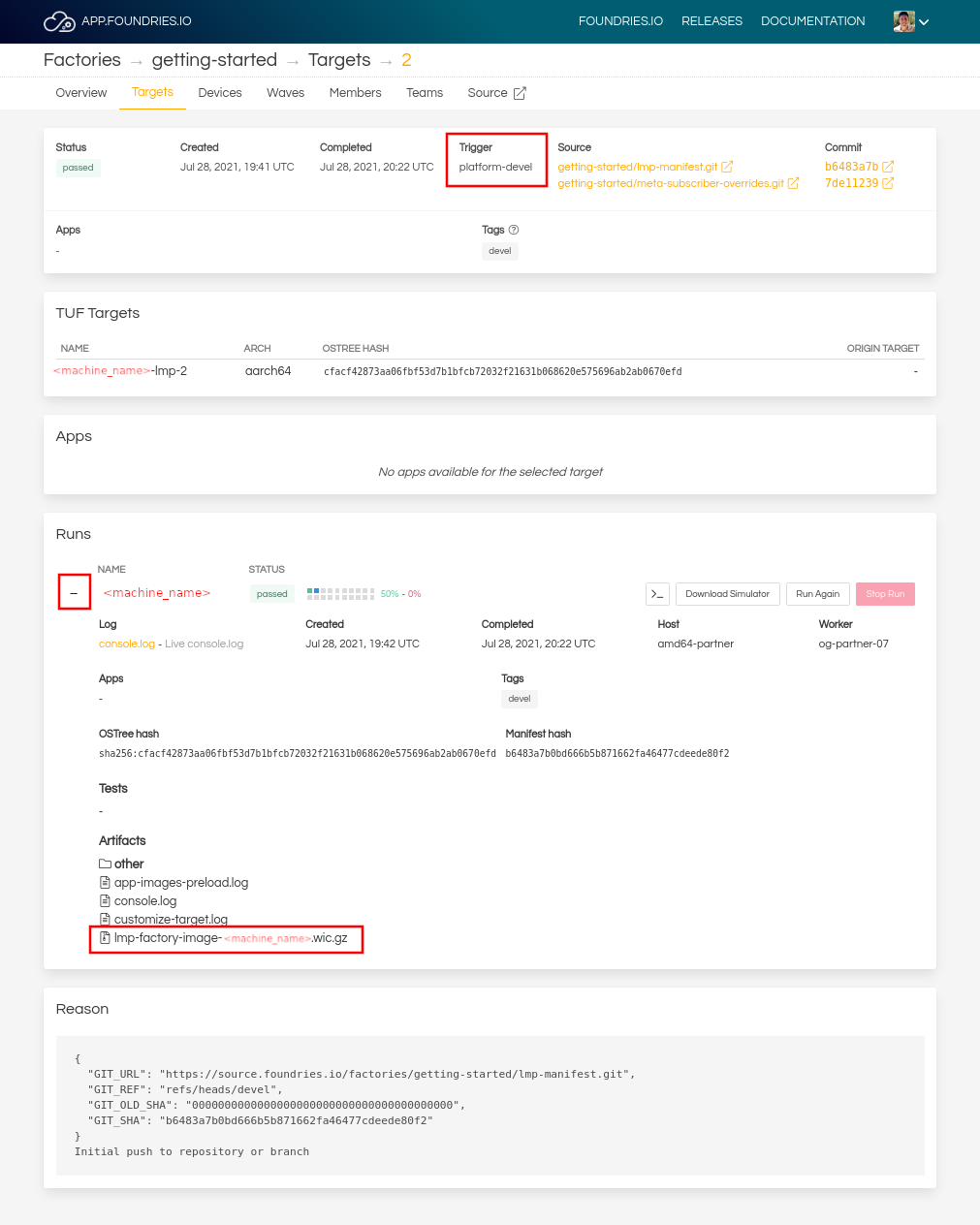Intel Core i7 CPU (and later) - Installing into Internal Flash¶
To install the system image into an internal flash drive, you should enable the WIC Image Installer.
With the WIC installer enabled, follow the instructions to flash the installer into a USB stick/SD Card.
Preparation¶
Ensure you replace the <factory> placeholder below with the name of your
Factory.
Download necessary files from
https://app.foundries.io/factories/<factory>/targets
Flashing¶
Now, flash the lmp-factory-image-intel-corei7-64.wic.gz retrieved from the
previous section to a USB Stick/SD Card. This contains the system image installer.
Determine the disk you want to flash by finding the device with the
SIZEthat matches your flash drive in the list below. Be sure to ignore partitions (whereTYPEispart). Save theNAMEfor your flash drive to be used in a later step as the disk path. e.g:/dev/mmcblk0,/dev/sdb:lsblk -po +MODEL
Example Output:
$ lsblk -po +MODEL NAME MAJ:MIN RM SIZE RO TYPE MOUNTPOINT MODEL /dev/mmcblk0 179:0 0 29.8G 0 disk ├─/dev/mmcblk0p1 179:1 0 41.6M 0 part /mnt/boot └─/dev/mmcblk0p2 179:2 0 29.8G 0 part /mnt/otaroot /dev/zram0 254:0 0 26G 0 disk /out /dev/nvme0n1 259:0 0 953.9G 0 disk SSDPEKKF010T8 NVMe INTEL 1024GB
Flash the disk.
Replace<system-image>with the path to your system image.Replace/dev/mmcblk<X>with your chosen disk path.
gunzip -c <system-image> | sudo dd of=/dev/mmcblk<X> bs=4M iflag=fullblock oflag=direct status=progress
Determine the disk you want to flash by finding the device with the
SIZEthat matches your flash drive in the list below. Be sure to ignore partitions (lines without the * in theSIZE). Save theIDENTIFIERfor your flash drive to be used in a later step as the disk path. e.g:/dev/disk3:diskutil list
Example Output:
$ diskutil list /dev/disk3 (internal, physical): #: TYPE NAME SIZE IDENTIFIER 0: FDisk_partition_scheme *15.5 GB disk3 1: Windows_FAT_32 boot 45.7 MB disk3s1 2: Linux 15.5 GB disk3s2
Flash the disk.
Replace<system-image>with the path to your system image.Replace/dev/disk<X>with your chosen disk path.
gunzip -c <system-image> | sudo dd of=/dev/disk<X> bs=4M
Windows has no dd like tool built into the operating system to flash
your image to disk. In this case, we recommend you download and use either
Win32 Disk Imager or Rufus.
Note
Your system image is in a compressed wic.gz format. To follow these next steps, you must extract it using a tool like 7zip which will leave you with a .wic image file.
Using Rufus
- Download and run Rufus.
- Select your disk.
- SELECT your
<system-image>. - START the flash procedure.
Using Win32 Disk Imager
- Download and run Win32 Disk Imager as Administrator.
- Click the blue folder icon.
- Select your
<system-image> - Select your disk via the Device dropdown.
- Click Write
- Wait for the image to finish writing, and a Write Successful dialog will appear.
- Remove the flash drive from the host and insert/connect it into the board.
- Power on the board to boot the new image.
Most Intel devices will boot from USB automatically. If the device doesn’t automatically boot from USB,
try holding F12 when your device first boots. This will allow you to select the device from a system-specific boot menu.
If F12 doesn’t work for you, check your device documentation to find how to bring up the boot menu.
Booting installer¶
Warning
The following steps will delete all your programs, documents, photos, music, and any other files on the selected device.
After boot, wait until the message:
Please select an install target or press n to exit (sda sdc)
sda
Type the name of the device you want to install the system image.
In the example above, the device used was sda.
Right after select the device, the prompt will ask if you want to proceed:
Proceed anyway? (y,N)
Type y if you want to continue the installation.
When the installation completes, the following message will be displayed:
Installation successful. Remove your installation media and press Enter to reboot.
Follow the instructions and reboot the device.

